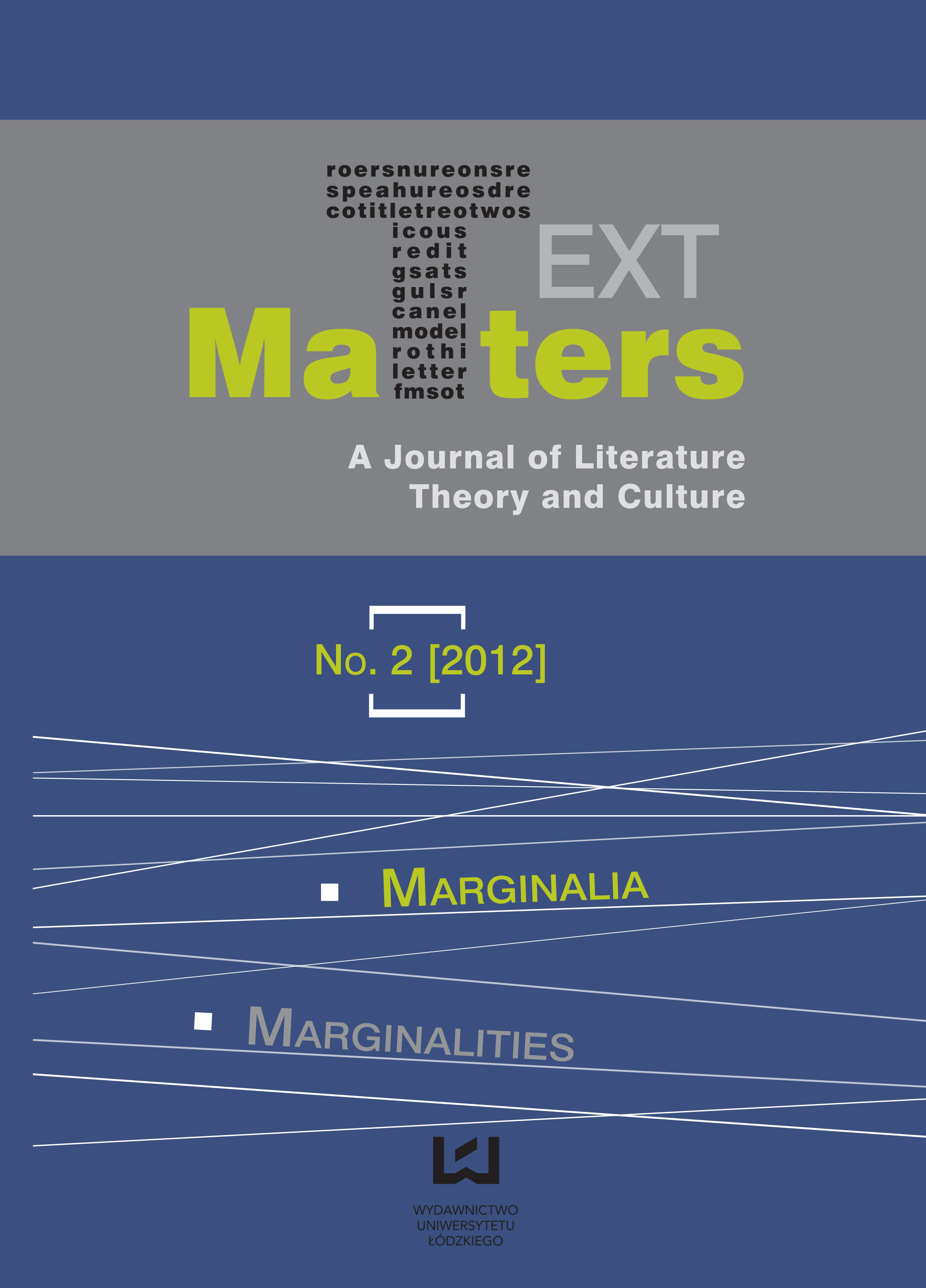Beyond the Margins: Identity Fragmentation in Visual Representation in Michel Tournier’s La Goutte d’or
DOI:
https://doi.org/10.2478/v10231-012-0068-1Abstract
In the final scene of Michel Tournier’s postcolonial novel La Goutte d’or (1986), the protagonist, Idriss, shatters the glass of a Cristobal & Co. storefront window while operating a jackhammer in the working-class Parisian neighbourhood on the Rue de la Goutte d’or. Glass fragments fly everywhere as the Parisian police arrive. In La Goutte d’or, Tournier explores the identity construction of Idriss through a discussion of the role that visual images play in the development of a twentieth-century consciousness of the “Other.” At the beginning of the novel, a French tourist takes a photograph of Idriss during her visit to the Sahara. The boy’s quest to reclaim his stolen image leads him from the Sahara to Marseille, and finally to the Rue de la Goutte d’or in Paris. The Rue de la Goutte d’or remains one the most cosmopolitan neighbourhoods of the city.
In Tournier’s novel, the goutte d’or also corresponds to a symbolic object: a Berber jewel. It is the jewel that Idriss brings with him, but which he also subsequently loses upon his arrival in Marseille. From the very moment that the French tourist photographs him, a marginalization of Idriss’s identity occurs. Marginality, quite literally, refers to the spatial property of a location in which something is situated. Figuratively speaking, marginality suggests something that is on the edges or at the outer limits of social acceptability. In this essay, I explore the construction of the marginalized postcolonial self (the “Other”) through an examination of the function of visual representation in the development of a postcolonial identity in La Goutte d’or. In the end, I conclude that the construction of a postcolonial identity is based upon fragmentation and marginalization, which ultimately leads its subject to create an identity based upon false constructions.
Downloads
References
Armes, Roy. African Filmmaking: North and South of the Sahara. Bloomington: Indiana UP, 2006. Print
Google Scholar
Ashcroft, Bill, Gareth Griffiths, and Helen Tiffin. The Empire Writes Back: Theory and Practice in Post-Colonial Literatures. London: Psychology, 2002. Print
Google Scholar
Bacque, Marie-Hélène, et al. “Social Mix Policies in Paris: Discourses, Policies and Social Effects.” International Journal of Urban and Regional Research 35.2 (2011): 1–18. Print
Google Scholar
Bertrand, Didier. “Photography at Odds with Reality in Michel Tournier’s La Goutte d’or.” Romance Languages Annual 7 (1995): 13–17. Print
Google Scholar
Buisine, Alain. “A Dispossessed Text: The Writings and Photography of Michel Tournier.” Trans. Roxanne Lapidus. Sub-Stance 18:1 (1989): 25–34. Print
Google Scholar
Campbell, Joseph. The Hero with a Thousand Faces. Novato: New World Library, 2008. Print
Google Scholar
Colapietro, Vincent Michael. Peirce’s Doctrine of Signs: Theory, Applications, and Connections. Berlin: de Gruyter, 1996. Print
Google Scholar
Culler, Jonathan. Structuralist Poetics. Ithaca: Cornell UP, 1975. Print
Google Scholar
Goodman, Jane E. Berber Culture on the World Stage: From Village to Video. Bloomington: Indiana UP, 2005. Print
Google Scholar
Homer, Sean. Jacques Lacan. New York: Routledge, 2005. Print
Google Scholar
Mitrano, G.F. “The Photographic Imagination: Sontag and Benjamin.” Post Script 26.2 (2007): 117–36. Print
Google Scholar
Perez, Nissan. Focus East: Early Photography in the Near East (1839– 1885). New York: Abrams, 1988. Print
Google Scholar
Petit, Susan. Michel Tournier’s Metaphysical Fictions. Philadelphia: Benjamins, 1991. Print
Google Scholar
Pezechkian, Pary. “La Goutte d’or de Michel Tournier: pour une rhétorique de l’image.” Francographies: Bulletin de la Société des Professeurs Français et Francophones D’Amérique 1 (1993): 1–6. Print
Google Scholar
Platten, David. Michel Tournier and the Metaphor of Fiction. New York: St. Martin’s, 1999. Print
Google Scholar
Price, David. “Simulacra, Symbolic Exchange and Technology in Michel Tournier’s La Goutte d’or.” Studies in Twentieth Century Literature. 17:2 (1993): 349–63. Print
Google Scholar
Said, Edward. Orientalism. New York: Vintage, 2005. Print
Google Scholar
Sontag, Susan. On Photography. New York: Dell, 1978. Print
Google Scholar
Tournier, Michel. La Goutte d’or. Paris: Gallimard, 1986. Print
Google Scholar
Vogl, Mary B. Picturing the Maghreb: Literature, Photography, (Re)Presentation. Lanham: Rowman, 2002. Print
Google Scholar
Wolf, Mary Ellen. “The View from the Street: La Goutte d’Or.” Journal of International Women’s Studies 6.2 (2005): 202–07. Print
Google Scholar
Downloads
Published
How to Cite
Issue
Section
License
Copyright (c) 2012 This content is open access.

This work is licensed under a Creative Commons Attribution-NonCommercial-NoDerivatives 4.0 International License.













